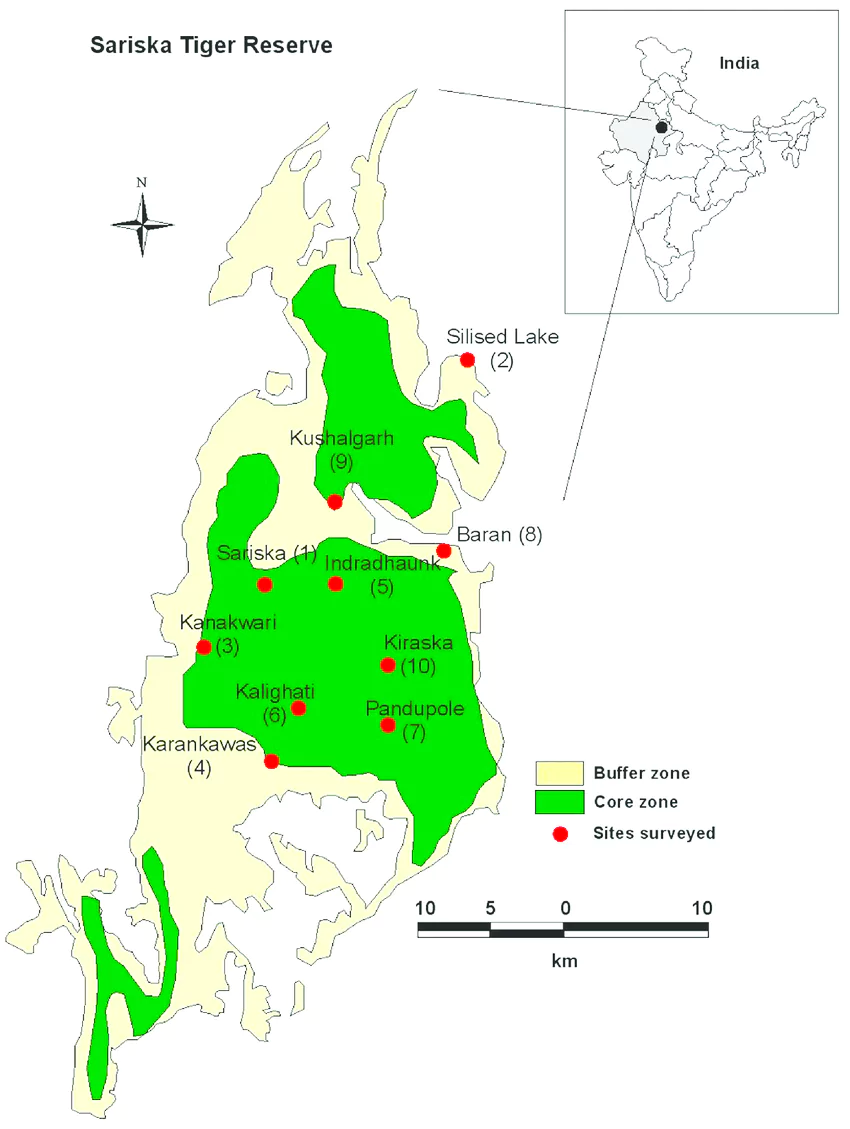Context
The official documents reveal that almost 60.5% of the total Sariska Tiger Reserve land has not been transferred to the forest department yet.
Land Ownership Issues Plague Sariska Tiger Reserve, Prompting Concerns for Wildlife Habitat
Sariska Tiger Reserve was allotted a total 88,111.2 hectares in 1978, but the forest department still has not been handed ownership of 53,308.96 hectares due to pending mutation processes by the revenue department.
- Current Status: Of the 53308 hectares awaiting mutation process, required for the transfer of land ownerships, approximately 41,239 hectares is in STR and 2,096 hectares in the Alwar range.
- Also, about 10,000 hectares of land are still not surveyed and are in process.
- Impact:
- Illegal Allocation: The unclear land Rights encourages illegal allocation of land within the tiger reserve and its surrounding areas.
- The NGT has also notified the CBI for investigation to check for illegal allocation of forest land
- Exploited and Encroached: Proliferation of colonies, hotels, encroachments, and industrial areas in this region is seen.
- Severe Environmental Damage: Illegal mining and hotel constructions are rampant in the region affecting the ecosystem of the park.
- Non forestry activities: Due to the absence of clear land titles, areas within the park such as the Tehla Gate, have been utilized for non-forestry activities since they are still classified as Revenue Land.
- Lack of Transparency: The vagueness in titles result in forest department acting in discretion and halting activities outside the boundaries of the park
- Intervention needed:
- Delimiting and demarcating boundaries to safeguard habitats of big cats.
- Expediently transferring forest land titles into official records to afford them legal protection.
Enroll now for UPSC Online Course
About Sariska Tiger Reserve

- Location: Sariska Tiger Reserve is situated in the Alwar district of Rajasthan state in India and is the sole tiger reserve in the National Capital Region.
- Area: The Sariska Tiger Reserve is spread over an area of 1203.33 sq. km (881.11 sq. km core/ 322.22 sq. km buffer) of the Aravalli hills.
- Nature of habitat: The Reserve is a blend of scrub-thorn arid forests, dry deciduous forests, grasslands, and rocky hills and is a part of the Aravalli Range and the Khathiar-Gir dry deciduous forests ecoregion.
- Present population: Tiger population stands at 34 big cats of which 11 are male adults, 14 are female adults, and 8 cubs and sub adults.
- Flora: Dhok (Anogessus pendula) is the dominant tree species covering over 90% area of the forest. Kathaa (Acacia catechu), Palas, Ber and Bamboo are common in the Valleys.
- Other noteworthy tree species are Arjun,Gugal,Kadaya, Amla, Bahera
- Fauna: Tiger, Leopard, Striped hyena, jackal, jungle cat, Desert Cat,rare four-horned antelope or Chousingha, large numbers of Sambar, Chital, Peafowl, (the largest population density in India) Grey partridge, Painted spurfowl etc.
![]() 18 May 2024
18 May 2024
